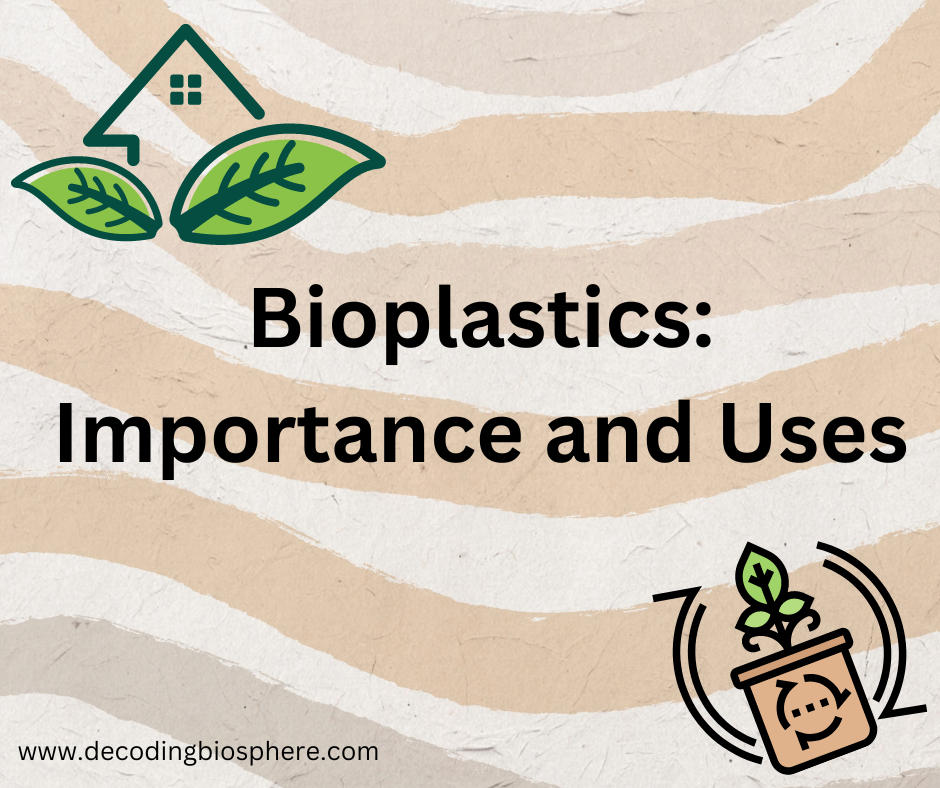In a world where environmental consciousness is on the rise, one term that has gained significant attention is “bioplastics.” But what exactly are bioplastics, and why are they becoming increasingly important? 🌱 Let’s look into this eco-friendly alternative to plastics and understand will bioplastics change the future for the better.
What Are Bioplastics? 🌽
Bioplastics are a type of plastic made from renewable, biological sources, such as plants, rather than fossil fuels like traditional plastics. They are designed to be more environmentally friendly and sustainable. 🌿
Why Are They Important? 🌍
Following are some of the benefits of using bioplastics which tell us why bioplastics are important.
- Reduced Dependency on Fossil Fuels: Bioplastics help reduce our reliance on fossil fuels, which are finite and contribute to climate change.
- Biodegradability: Some bioplastics are biodegradable, meaning they can break down naturally into harmless substances, reducing plastic pollution.
- Lower Carbon Footprint: The production of bioplastics often generates fewer greenhouse gas emissions compared to traditional plastics.
- Resource Efficiency: Utilizing renewable resources like plants for plastic production can be more sustainable in the long run.
- Innovative Applications: Bioplastics are versatile and can replace traditional plastics in various products, from packaging to medical devices.
Also Read: How Does Eco-friendly Food Packaging Benefit the Environment?
Types of Bioplastics 🌽
There are two main categories of bioplastics:
- Biobased Plastics: These are made from renewable sources like cornstarch, sugarcane, or potato starch. They are not necessarily biodegradable but have a lower carbon footprint.
- Biodegradable Plastics: These can break down naturally over time, reducing environmental impact. Examples include polylactic acid (PLA) and polyhydroxyalkanoates (PHA).
Common Uses of Bioplastics 🛍️
Bioplastics are making their way into various products:
- Packaging: Bioplastic bags, containers, and films are replacing traditional plastic packaging.
- Cutlery and Tableware: Biodegradable utensils and plates are popular choices for eco-conscious consumers.
- Textiles: Some bioplastics are used in clothing and fabrics, offering a more sustainable alternative to synthetic materials.
- Medical Devices: Bioplastics are employed in medical applications like sutures and implants.
- Agriculture: Biodegradable mulch films help improve soil quality and reduce plastic waste in agriculture.
Challenges and Considerations 🤔
While bioplastics offer many advantages, they also face challenges:
- Biodegradability Conditions: Biodegradable bioplastics often require specific conditions (e.g., industrial composting) to break down completely.
- Competition with Food Production: Using food crops for bioplastics can raise concerns about diverting resources away from food production.
- Recycling Complexity: Bioplastics can contaminate traditional plastic recycling streams, making recycling more challenging.
- Cost: Bioplastics can be more expensive to produce than conventional plastics, affecting their adoption.
- Awareness: Consumer awareness and proper disposal of bioplastics are essential for their success.
More Reading: How Long Does It Take for a Plastic Bag to Break Down and Decompose?
The Future of Bioplastics 🌟
As technology advances and environmental concerns grow, bioplastics are expected to play a more significant role in reducing plastic pollution and our carbon footprint. Researchers are working on improving their properties, making them even more sustainable and versatile.
By choosing products made with bioplastics and supporting eco-friendly initiatives, we can all contribute to a greener and more sustainable future. 🌏♻️
Some FAQs on Bioplastics
- How long does it take for bioplastic to decompose?
- The time it takes for bioplastics to decompose depends on various factors, including the specific type of bioplastic and the environmental conditions. Some biodegradable bioplastics can break down in a matter of months, while others may take several years. Industrial composting facilities often provide the ideal conditions for rapid decomposition.
- Is bioplast safe for piercings?
- Bioplast is considered a safe and biocompatible material for piercings. It is often used as an alternative to metals and traditional plastics because it is hypoallergenic, flexible, and less likely to cause skin irritation or allergies. However, it’s essential to ensure that the bioplast used for piercings meets safety and quality standards.
- What are bioplastics used for?
- Bioplastics are used in a wide range of applications, including packaging, disposable cutlery and tableware, agricultural mulch films, medical devices, 3D printing, textiles, automotive components, and more. They are valued for their sustainability and versatility.
- How are bioplastics made?
- Bioplastics are typically made through a polymerization process using renewable feedstocks, such as cornstarch, sugarcane, or potato starch. These feedstocks are broken down into their constituent molecules and then reassembled to create polymers that form the bioplastic material.
- What are bioplastics made of?
- Bioplastics can be made from a variety of biobased sources, including corn, sugarcane, soybeans, potatoes, algae, and even bacteria. The specific feedstock used determines the composition of the bioplastic material.
- Are bioplastics good for the environment?
- Bioplastics have the potential to be more environmentally friendly than traditional plastics. They can help reduce the carbon footprint, decrease dependence on fossil fuels, and reduce plastic pollution, especially when biodegradable options are used. However, their environmental benefits depend on factors like production methods, disposal practices, and the specific type of bioplastic.
You May Also Like


